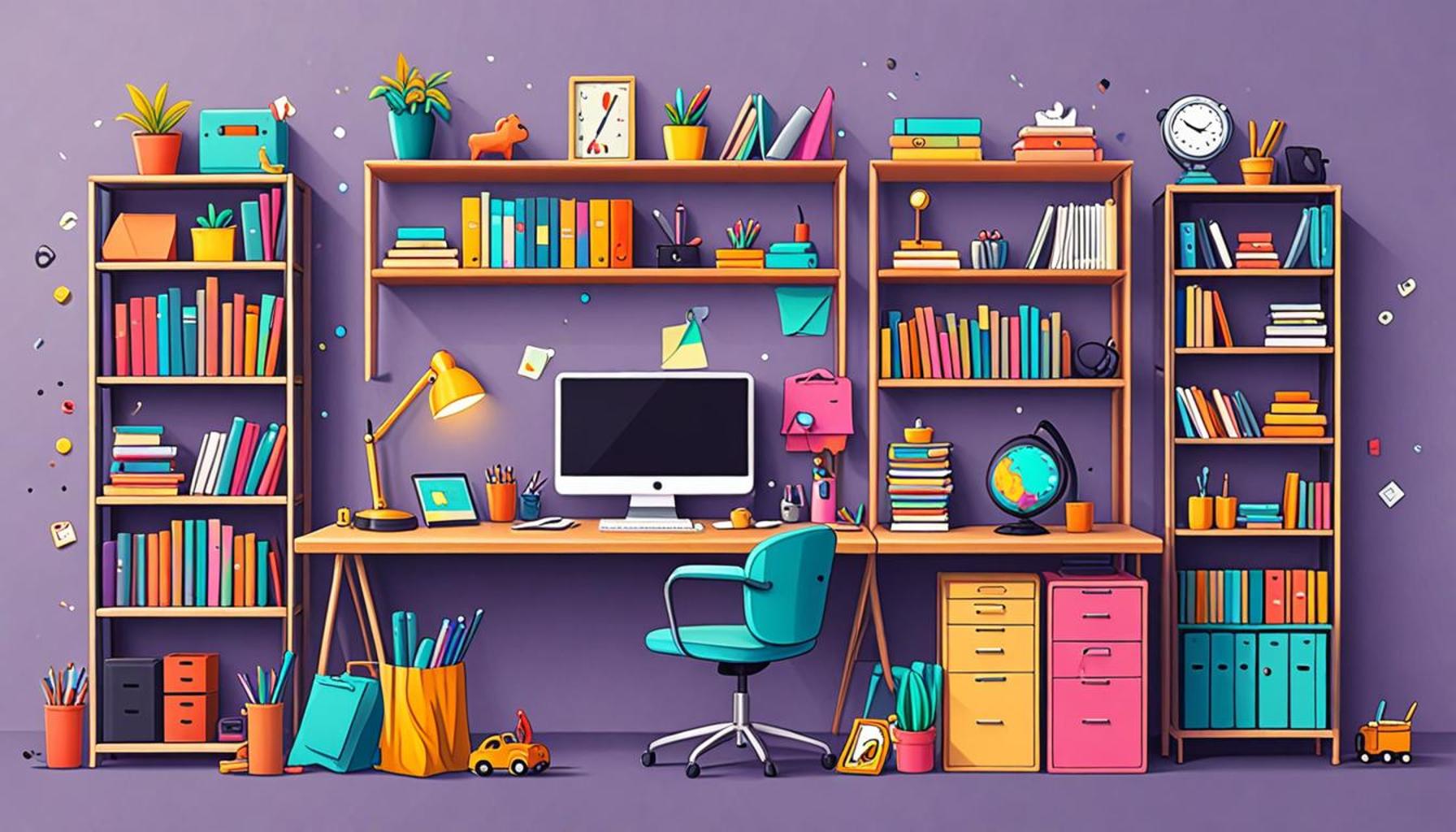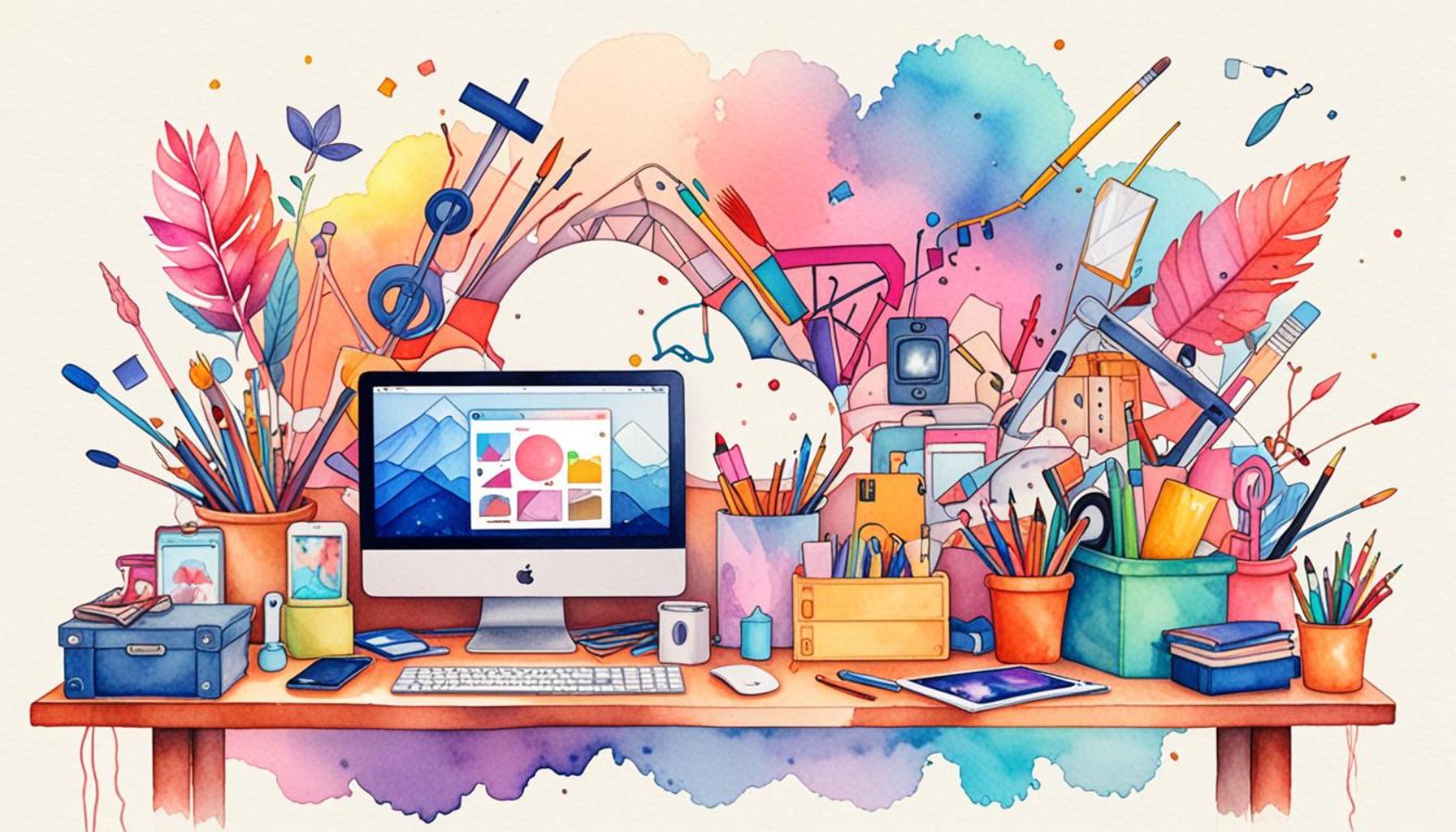The Impact of Decluttering on Productivity: Creating an Efficient Workspace

Understanding the Impact of a Tidy Workspace
In today’s fast-paced world, productivity is paramount. Research shows that a cluttered environment can significantly hinder focus and efficiency. This raises a key question: how does decluttering influence our productivity? A well-organized workspace is more than just visually appealing; it plays a crucial role in how efficiently we work and how effectively we achieve our goals.
When we think about an efficient workspace, consider several key factors:
- Organization: An organized space reduces distraction. Imagine a desk littered with papers, half-drunk coffee cups, and stray office supplies. In contrast, a clean, organized desk with essential items neatly arranged allows for fewer distractions, which can help maintain focus on the task at hand.
- Clear Mind: A decluttered desk promotes mental clarity. Studies suggest that a peaceful environment can enhance cognitive processing, allowing individuals to think more clearly and make fewer mistakes.
- Time Savings: Less clutter means finding materials faster. When everything has its place, you can access necessary documents quickly, reducing the time spent searching for misplaced items.
Statistics indicate that individuals spend approximately 55% of their workweek searching for information. This lost productivity not only affects personal performance but also translates to significant financial costs for businesses, potentially costing companies thousands of dollars annually. In fact, creating streamlined systems for managing information and workflow can fully leverage time and resources.
Furthermore, the benefits of decluttering extend beyond mere aesthetics. A neat workspace is linked to:
- Improved Focus: Less visual chaos fosters deeper concentration. Research shows that people are more likely to excel at tasks when their environments are not distracting, making it easier to remain engaged.
- Enhanced Creativity: A tidy environment encourages innovative thinking. A clear workspace allows the mind to wander freely and connect ideas more creatively without the weight of chaos pulling attention away.
- Stress Reduction: An orderly space can decrease anxiety and overwhelm. A clutter-free workspace can emit a sense of calm, making it easier to deal with work-related pressures.
In exploring the relationship between decluttering and productivity, it’s crucial to understand how minimalism in our workspaces can unleash our full potential. By tackling the clutter, you can transform not just your environment, but your entire approach to work. Consider using strategies such as the “two-minute rule,” where any task that can be completed in two minutes is done immediately, or the “one in, one out” principle, where bringing a new item into the workspace means removing an old one. These methods don’t just declutter your space; they foster a proactive mindset that can lead to long-term productivity gains.
DIVE DEEPER: Click here to discover space optimization strategies
The Psychology Behind Clutter and Concentration
As we delve deeper into the relationship between decluttering and productivity, it’s essential to examine the psychological aspects behind our workspace and its impact on our concentration. The physical environment in which we work can have profound implications on our mental state. Studies show that our brains are not just processing information but are also reacting to our surroundings. A cluttered desk can trigger stress responses and create a sense of chaos, which diverts attention away from core tasks.
To truly understand how decluttering affects productivity, consider the following aspects:
- Visual Overload: In a busy workspace filled with assorted papers, gadgets, and miscellaneous items, our eyes dart from one object to another. This visual overload splits our attention, making it harder to concentrate on one task. Reducing physical distractions allows for a more focused and engaged approach to work.
- Cognitive Load: Clutter not only distracts but also increases cognitive load. Every item on a desk requires mental processing: deciding what to keep, what to discard, and where items belong. Lowering this cognitive burden can free up mental resources, empowering us to think creativity and solve problems more effectively.
- Performance Anxiety: For many, a cluttered workspace can contribute to feelings of anxiety about productivity. The sight of unfinished tasks can weigh heavily on the mind. This often leads to procrastination or a feeling of being overwhelmed, which hinders overall progress.
Moreover, the concept of a decluttered workspace transcends beyond just physical items. It’s about creating a systematic approach to managing both space and tasks. For instance, implementing digital decluttering practices—such as organizing files on your computer and minimizing notifications—can yield similar productivity improvements. A clean digital environment reduces distractions and enhances efficiency when navigating through various workflows.
For practical application, individuals can adopt several strategies to embrace a decluttered mindset effectively. One popular method is the KonMari method, which advocates for keeping items that “spark joy.” By applying this philosophy to workspace items, individuals can create a setting that not only feels personalized but also motivates productivity. Similarly, setting a routine for regular decluttering sessions ensures that the workspace remains efficient and conducive to focus over time.
In the United States, where the culture often emphasizes hustle and productivity, the implications of maintaining an efficient workspace become even more pronounced. With remote work becoming increasingly prevalent, individuals must take extra measures to cultivate an environment that supports their productivity goals. The ongoing investment in creating a clean workspace pays off significantly, not just through improved focus but also through enhanced creativity and well-being.
The Impact of Decluttering on Productivity: Creating an Efficient Workspace
Decluttering goes beyond just tidying up a space; it’s about transforming your environment to boost productivity. A clutter-free workspace allows for enhanced focus as it reduces distractions. According to research, individuals in organized surroundings can complete tasks faster while maintaining a high quality of work. When your workspace is reduced to only the essentials, your mind can channel its energy towards more important tasks rather than the chaos around you.
Moreover, an organized workspace fosters creativity. When workers are not bogged down by excess items, they can think more freely and innovate without the restrictions posed by visual clutter. This is vital in today’s fast-paced world where adaptability is key. For example, many successful companies have embraced minimalism in their office design, leading to happier employees and greater output.
The mental clarity that arises from decluttering also precipitates a sense of control and accomplishment, which can combat workplace stress. When employees feel empowered through an organized space, they are far more likely to tackle challenging projects head-on, improving overall effectiveness.
In the realm of time management, a decluttered environment contributes significantly. It allows for quicker access to materials and reduces the time spent searching for lost items. This efficiency translates into saved hours that can be redirected toward critical tasks or opportunities for collaboration.
Lastly, it’s essential to recognize that decluttering is an ongoing process. Regularly reassessing your workspace and habits is crucial. Success is not only about creating an efficient workspace but also about sustaining it. Embracing these practices can lead to a profound transformation in how individuals engage with their work.
| Category | Advantages |
|---|---|
| Focus Enhancement | Reduced distractions lead to higher concentration levels. |
| Improved Creativity | An organized space stimulates innovative thinking and problem-solving. |
| Stress Reduction | A clear environment promotes a sense of control and mental well-being. |
| Time Efficiency | Quicker access to tools reduces wasted time and increases productivity. |
In summary, decluttering can significantly influence productivity levels within the workspace. Embracing this practice leads to not only a better working environment but also a more fulfilled and efficient individual.
DISCOVER MORE: Click here to learn effective techniques
Creating Habits for a Lasting Change
Achieving a decluttered workspace is not merely a one-time task, but rather a habitual practice that can shape productivity over the long term. Developing techniques that sustain a clean and organized environment is crucial for ongoing efficiency. In today’s fast-paced work culture, where distractions abound, the way we maintain our spaces directly reflects not just our productivity levels but also our overall mental health.
One effective method to foster a decluttered workspace is the Five-Minute Rule. The premise is simple: dedicate five minutes at the end of each day to clear your desk of unneeded items, organize files, or clean digital spaces. This small, manageable time investment can prevent clutter from accumulating and becoming overwhelming. Research by productivity experts suggests that consistent, incremental efforts yield more significant long-term results compared to sporadic, intensive decluttering sessions.
Moreover, incorporating a designated space for everything enhances both physical and mental organization. Utilizing organizers, shelves, and filing systems can drastically improve workspace functionality. For example, using labeled folders for important documents removes the need to sift through piles of papers when looking for critical information. In a survey conducted by the National Association of Professional Organizers, 82% of respondents reported that they were more productive and less stressed in an organized space. Such statistics highlight the tangible benefits of investing in organizational tools.
The Role of Minimalism in Workspaces
Minimalism has emerged as a powerful trend in workspace design, resonating with individuals seeking simplicity and focus. By adhering to minimalist principles, you can create a workspace that minimizes distractions and maximizes functionality. This approach often includes investing in fewer yet more meaningful items. For instance, using a single, multifunctional tool rather than multiple gadgets can streamline productivity significantly.
Implementing a visual hierarchy in your workspace can also facilitate enhanced productivity. Arranging essential tools and documents within eyesight while relegating less critical items to storage can direct focus where it is most needed. Such visual organization aids in minimizing decision fatigue, allowing workers to channel their mental energy toward creative problem-solving rather than spending time deciding where items belong.
Additionally, the impact of nature in the workplace should not be overlooked. Studies indicate that incorporating elements of biophilic design, such as plants or natural light, into a workspace can transform an environment and promote a sense of calm. This aesthetic change can play a significant role in fostering a productive mindset. A recent report by the World Green Building Council found that companies incorporating biophilic elements experienced up to a 15% increase in productivity among employees.
Emphasizing Digital Decluttering
In an age dominated by technology, the concept of decluttering extends to our digital workspaces as well. A staggering 74% of Americans admit to feeling overwhelmed by the volume of digital information they manage daily. To tackle this, individuals should routinely assess their online tools, unsubscribe from unnecessary emails, and keep digital files organized in a structured manner. Utilizing digital tools for task management—such as Trello or Asana—can help clarify priorities and create a roadmap toward completion.
In summary, developing habits that promote decluttering and organization not only impacts productivity but can also enhance the overall workplace environment, fostering creativity and reducing stress. Embracing both physical and digital decluttering methods is instrumental in achieving a workspace ripe for efficiency and focused performance.
DISCOVER MORE: Click here to learn how technology can transform your minimalist lifestyle
Conclusion: Embracing the Power of Decluttering
In conclusion, the impact of decluttering on productivity cannot be overstated. A well-organized workspace, both physically and digitally, sets a foundation for efficiency, creativity, and overall well-being. As highlighted throughout this article, cultivating habits such as the Five-Minute Rule and embracing minimalism not only streamline your workspace but also foster a productive mindset. Interestingly, statistics reveal that over 82% of individuals experience increased productivity and decreased stress in organized environments, emphasizing the profound benefits of intentional organization.
Furthermore, integrating elements of biophilic design and employing digital decluttering practices can enhance not only individual productivity but also team dynamics, creating a harmonious work atmosphere. As companies increasingly adopt these strategies, we must recognize that maintaining an efficient workspace is a continuous journey, requiring ongoing commitment and adaptability.
Ultimately, by prioritizing decluttering, we open the door to heightened focus and creativity, allowing us to maximize our potential. The quest for an efficient workspace is more than a mere aesthetic choice; it is an essential investment in our productivity and mental health. As you reflect on your own workspace, consider what small changes you can make today to embark on a path toward greater efficiency and success.



